The best phones to buy in Australia 2024: top phones tested and ranked
Time for an upgrade? See all the best phones and how they stack up to spot the right option for you
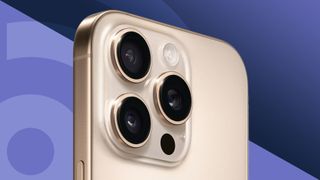
1. The list in brief
2. Best overall
3. Best iPhone
4. Best Samsung
5. Best Pixel
6. Best budget
7. Best value
8. Best compact
9. Best foldable
• FAQs
• How we test
The best phones in Australia should, broadly speaking, cover a lot of bases beyond being able to make phone calls. With so many smartphones on the market, the best options should have powerful cameras, nice screens, fast performance and adequate battery life, capped off with a premium aesthetic and a price tag that isn’t prohibitive ( if you’d like to keep costs as low as possible, we’d recommend you read our best cheap phones guide).
That’s where we come in. We’ve tried, tested and reviewed the best phones on the market, comparing their price, design, display, performance, cameras and more. With these things in mind, we feel comfortable making a call on which handsets are the best for certain buyers in the Australian market.
No matter what you're looking for from your handset, there is a phone for you on this list. Let’s go through the eight best phones in Australia below.
The best phones in Australia: quick list
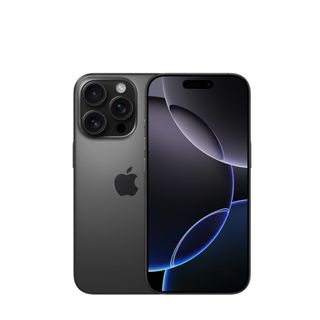
The best phone overall
Apple’s iPhone 16 Pro takes over the top spot from the iPhone 15 Pro, sporting a new capacitive touch Camera Control button, a slightly larger display and the new A18 Pro chip.
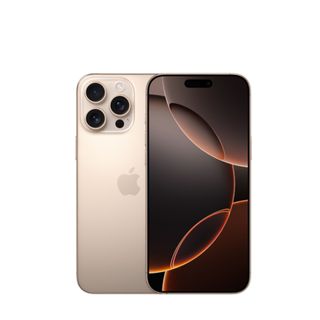
The best iPhone
Apple’s large iPhone 16 Pro Max has great camera performance, a new capacitive button on the side for making quick adjustments, and the new A18 pro chip, paired with the huge display that makes it the top-end device.
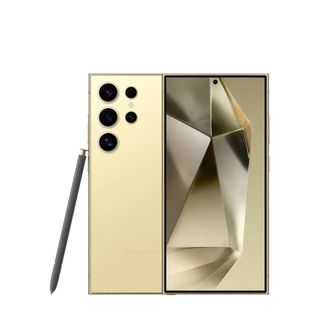
The best Samsung
The Samsung Galaxy S24 Ultra ranks high among the best Android smartphones you can buy, with an incredible 5x telephoto camera and a brilliant titanium design that puts it in tight competition with the iPhone 16 Pro Max.
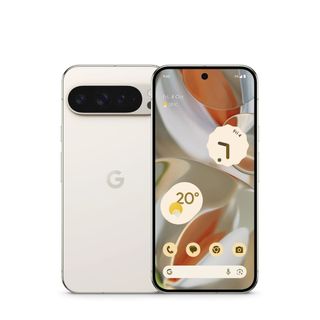
The best Pixel phone
Google has attached a new ‘XL’ suffix to its top phone in the ninth-generation Pixel, although a smaller Pixel 9 Pro version is also available. Boasting a faster recharge rate, superior performance and the same brilliant cameras that we’ve come to love, the Pixel 9 Pro XL is top of the pile.

The best budget phone
With Google’s Pixel A series creeping further and further out of ‘budget’ territory, the Samsung Galaxy A55, is now the strongest contender for the ‘best budget phone’ title. It brings a budget smartphone experience with performance that makes it more like the Galaxy S range.
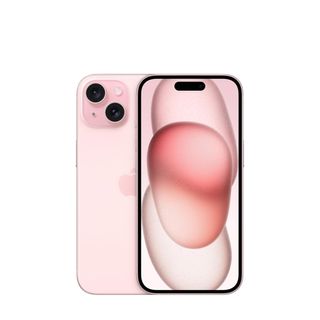
The best value phone
Apple’s Pro phones might top this list, but the base package iPhone 15 is not to be disregarded, with its 48MP main camera, Dynamic Island and the A16 chipset. It’s a very competitively priced phone.
Reveal the next 2 products...
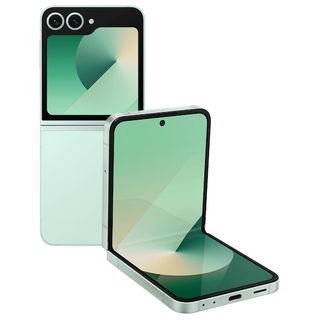
The best compact phone
In its folded form, the Samsung Galaxy Z Flip 6 is the smallest phone on this list, with a gorgeous exterior display for checking notifications and answering phone calls. It’s a fun device to use with the performance to keep up.
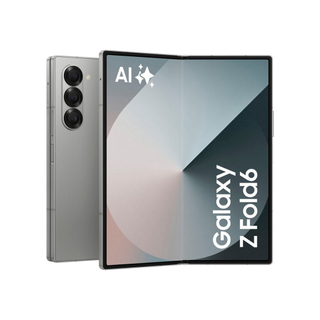
The best foldable phone
Samsung’s Galaxy Z Fold 6 takes the ‘best foldable’ crown, snatching it from the Z Fold 5. An upgraded design with slightly tweaked internals make it the option to consider if you want a book-style folding smartphone.
The best phones in Australia 2024
Why you can trust TechRadar
You’ll find more detailed information on the best phones in Australia below. Our team of experts has tested each phone extensively, allowing us to say categorically which ones are genuinely worthy of your attention.
The best phone for most people
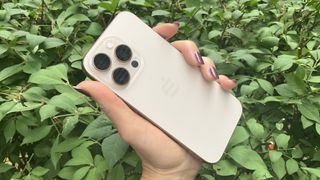
1. iPhone 16 Pro
Our expert review:
Specifications
Reasons to buy
Reasons to avoid
✅ You want Apple's best Pro ever but don't need a huge screen: The iPhone 16 is everything the iPhone 16 Pro Max is without the weight and size (and some of the battery life), it's the premiere iPhone for people with smaller tastes.
✅ You want a head start on Apple Intelligence: Apple Intelligence feels like an exciting experiment that has some stellar capabilities, like Clean Up and more forgiving Siri, but it's far from finished. You can get in on the ground floor now, though.
❌ You want the biggest screen possible with the highest resolution: Apple's iPhone 16 Pro's 6.3-inch display is larger than before but dwarfs in comparison to the iPhone 16 Pro Max's larger 6.9-inch display. And the higher pixel-per-inch can be found on displays from Samsung and Google.
❌ You want more AI: Apple intelligence is an exciting start but it's far from finished, and there are other phones from Samsung and Google that hold nothing back on the AI front.
The iPhone 16 Pro is the best Apple has to offer bar its larger-screened sibling. It has interchangeable performance with the 16 Pro Max and is likely more attractive if you want a smaller device or if you want to save some money. It’s slightly larger and heavier than the model it’s succeeding, but it’s still compact and comfortable with a larger 6.3-inch display.
While the iPhone 16 Pro doesn’t provide an across-the-board refresh over the 15 Pro, it does offer some incremental improvements. Processing power has been bumped up with the introduction of the A18 chip, and minimum brightness can now go as low as one nit. The Camera Control button is the most obvious difference from earlier generations, functioning as a capacitive touch button on the lower right side, allowing the user to adjust zoom simply by sliding their finger against the spot.
One thing that hasn't changed is that camera performance is undoubtedly still a highlight with the 16 Pro, with the ultrawide sensor receiving a 42MP upgrade this time around from the 15 Pro's 12MP. For general users, these cameras are some of the best you can get on the market.
While a big part of Apple’s recent iPhone push has been Apple Intelligence, the usefulness of this suite of features is still hit and miss. As we wrote in our review, “It's hard to argue for Apple Intelligence as an upgrade driver when Google and Samsung are selling smartphones with far more complete AI offerings.”
Additionally, though the iPhone 16 Pro covers its bases well, it still has a fairly unimpressive screen for the category it’s competing in. Don't get us wrong – the ProMotion Super XDR OLED display isn’t bad, but the displays in similarly priced Samsung devices are quick to surpass this model, with greater pixel densities, resolutions and sizes on offer.
The AU$1,799 starting price makes the iPhone 16 Pro quite a premium purchase, but there’s no doubt that you’ll get a quality device. The phone received a 'TechRadar Recommends' seal of approval in our review.
Read our full iPhone 16 Pro review
- Check out the latest Apple promo codes for this month's best deals
The best iPhone
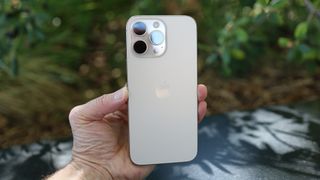
2. iPhone 15 Pro Max
Our expert review:
Specifications
Reasons to buy
Reasons to avoid
✅ You want the biggest and best iPhone ever: There has never been a larger iPhone, or a larger iPhone screen than the one found on the iPhone 16 Pro Max.
✅ You want a head start on Apple Intelligence: Apple Intelligence feels like an exciting experiment that has some stellar capabilities, like Clean Up and more forgiving Siri, but it's far from finished. You can get in on the ground floor now, though.
❌ You want more affordable big-screen power: The iPhone 16 Pro Max holds the line on price, but it still starts at $1,199 / £1,199 / AU$2,149. If you want to save a couple of hundred dollars but still get that big-screen fun, you could look at the Google Pixel 9 XL.
❌ You want more megapixels: While 48MP is nothing to sneeze at, the Samsung Galaxy S24 Ultra offers a 50MP main camera.
Apple’s best phone ever is the iPhone 16 Pro Max, fitted with a gigantic screen and all the same improvements that apply to the iPhone 16 Pro display aside. This includes the A18 Pro chip, the handy new Camera Control capacitive touch button and refreshed brightness that can go as low as 1 nit and as high as 2,000 nits.
The display of the iPhone 16 Pro Max has been improved, now a massive 6.9-inches from the 15 Pro Max’s 6.7-inches. The ultrawide camera has been upgraded with a 48MP sensor, and though the phone is slightly larger than the model it replaces, it is still compact and handy enough to fit in your pocket while also looking quite stylish.
Apple Intelligence was one of the things that led the push behind the iPhone 16 family of devices, but we’ve found very little to celebrate in the new AI-powered features, especially when similar offerings from Samsung and Google are more fleshed out. We were also unimpressed with how underpowered camera zoom appeared compared to other flagship phones, and we’re hoping that future models improve upon this.
Additionally, while Apple’s phones capture some of the best photos you can currently take on a smartphone, some of the photo editing tools are a bit more complicated than they have any right to be. Adjusting the mood and levels of a photo required a lot more fiddling than a casual user would probably want to bother with.
But none of the problems with the iPhone 16 Pro Max stopped it from receiving a TechRadar Recommends seal of approval. If you’re an Apple lover and want the best-of-the-best, you’ll be leaning towards the iPhone 16 Pro Max.
Read our full iPhone 16 Pro Max review
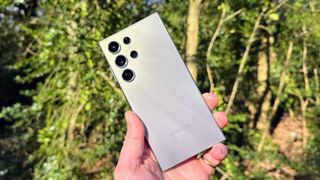
3. Samsung Galaxy S24 Ultra
Our expert review:
Specifications
Reasons to buy
Reasons to avoid
✅ You want the most feature-packed phone: The Galaxy S24 Ultra packs in every feature in the history of mobile devices, including wireless charging, water resistance, and even a stylus – but it can also replace your laptop, camera and tablet.
✅ You're onboard with AI: The S24 Ultra's suite of AI smarts, such as Circle to Search and Live Translate will likely be useful for many, and we expect more features to arrive in the future.
❌ You don't like big phones: The S24 Ultra is smooth, and curved, and also very, very big. It's so big that it can hide a full stylus and a huge battery inside and remain water resistant. With a case, it's a behemoth.
❌ You hate One UI: Samsung messes with Android, and though One UI gets better every time we use it, Google's own Pixel version is still simpler and more refined.
Samsung has stuck to a tried and tested design formula with the Galaxy S24 Ultra it seems: it looks nigh-on identical to both its S23 Ultra and S22 Ultra predecessors. But that's pretty much where the similarities end, because Samsung's latest is a far more powerful – and far smarter – beast entirely, so much so it is realistically the best phone you can buy right now if you're not an iOS loyalist.
To start, the S24 Ultra has the Qualcomm Snapdragon 8 Gen 3 at its core, and this already impressive processor gets a further boost thanks to a collaboration between Samsung and Qualcomm for the former’s new device. The result, which Samsung calls the 'Snapdragon 8 Gen 3 Mobile Platform for Galaxy', is a processor that can comfortable run multiple apps and games at once, without so much of a stutter. This new processor is also the brains behind Samsung's on-device Galaxy AI capabilities.
Truth be told, the screen and battery of the Samsung Galaxy S24 Ultra are pretty much identical to the model it replaces, but perhaps most importantly, the camera has received a small but not insignificant upgrade. While the insane 200MP wide sensor makes a comeback, you'll now find a new 50MP 5x zoom periscope camera (which replaces the S23 Ultra's 10MP 10x telephoto lens). While the physical zoom capabilities have effectively been reduced, you'll be able to pick out far greater detail in the images you take and for our money, we'd take a more detailed photo over one that employs far too much zoom.
Naturally, the Samsung Galaxy S24 Ultra isn't a cheap phone, and you will have to dig deep if you want to own one. Be sure to check out our round-up of the best Samsung Galaxy S24 Ultra plans for the latest deals.
Read our full Samsung Galaxy S24 Ultra review
- Check out the latest Samsung promo codes for this month's best deals
The best Pixel phone
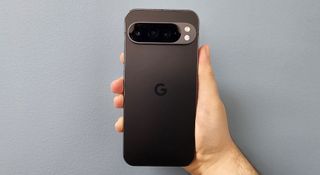
4. Google Pixel 9 Pro XL
Our expert review:
Specifications
Reasons to buy
Reasons to avoid
✅ You want to create a lot of stuff using AI: The Google Pixel 9 Pro XL has tons of AI features to be creative. You can make your own images, tweak photos, write stories and messages, and plenty more.
✅ You want an assistant to take notes for you: Google AI can listen to your calls and take notes later, so you don't have to grab a pen when the doctor or the dog-sitter starts giving you detailed instructions.
❌ You're worried about AI: The Google Pixel can listen to your calls and make deep fake images that will fool most people. If you're worried about AI, this phone won't help.
❌ You want the absolute best cameras: While the Pixel 9 Pro XL is impressive, nothing beats the Galaxy S24 Ultra for camera capabilities and quality, not even with Video Boost.
Google’s high-end smartphone wedged its way into a new name as the Pixel 9 Pro XL, making room for a smaller model with many of the same specs but without the XL suffix. The Pro XL retains the same large and gorgeous display that the bigger Pixel device has always had, with the same brilliant camera performance that casual users love for the mix of hardware and software smarts.
This year, the most noticeable change came in the form of a redesign of the chassis with a more oval camera bump. The Pixel 9 Pro XL also features a much faster recharging speed, capable of going from 0-70% battery in just 30 minutes when using a compatible 37W charger. There’s also been an upgrade to 16GB RAM and a tiny increase to battery and screen size.
Moreover, there’s a bunch of new AI features – including the ability to look up the contents of your screenshots with a simple search and a new AI image generator – but these features require a bit of trust in Google on the privacy side of things.
Additionally, while Pixel devices are generally quite good, it’s worth noting that you’ll get better processor performance from similarly priced Samsung phones as the latest Tensor G4 isn’t quite as powerful as the Snapdragon
Read our full Google Pixel 9 Pro XL review
The best budget phone
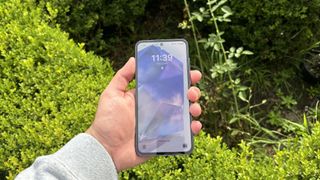
5. Samsung Galaxy A55
Our expert review:
Specifications
Reasons to buy
Reasons to avoid
✅ You want a budget phone that looks premium: The Samsung Galaxy A55 does what all great budget smartphones do – feels exceptionally premium. In another world, the Galaxy A55 may as well be called the S24A, because of how nice it feels to use.
✅ You want to take great photos: Samsung’s Galaxy A series cameras are usually a step down from the company’s Galaxy S range, but the lenses in the Galaxy A55 feel up to scratch, especially for a AU$699 device.
❌ You need lots of storage without an SD: Australian buyers might be turned off by the lack of internal storage, with only 128GB available. However, there is a microSD slot in place.
❌ You want a flash display: In bright sunlight, you may struggle to see the screen of the Samsung Galaxy A55. Fingerprint smudges also show quite easily.
The Samsung Galaxy A55 is the best pick for a budget handset at the moment, given that Google’s great Pixel 8a has seen a price bump. At the $699 price point, Samsung’s budget-range handset feels premium without needing the ‘S’ suffix.
The Galaxy A55 takes style points from the Galaxy S series, while retaining a gloss back that makes it unique, and obviously more related to the A range. Slightly upgraded internal specs and Samsung’s proprietary Knox Vault security system spearhead the big changes from last year’s model. Low-light photos have also seen a buff from improved signal processing.
The cameras you can expect on the Galaxy A55 include a 50MP main camera, a 12MP ultrawide, a 5MP macro and a 32MP selfie camera. It can record video at up to 4K/30fps.
The 6.6-inch AMOLED display runs at 120Hz, with a max brightness of 1,000 nits. It also has a brilliant battery life, and we had no trouble getting it to last all day during our testing.
Read our full Samsung Galaxy A55 review
The best value phone
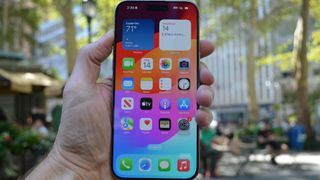
6. iPhone 15
Our expert review:
Specifications
Reasons to buy
Reasons to avoid
✅ You want an affordable iPhone: The iPhone 15 strikes a nice balance between price and cutting-edge features, so you don't feel like you're missing out.
✅ You want a camera upgrade: Between the new 48MP main camera and some excellent portrait photography capabilities, the iPhone 15 offers strong camera specs for the price.
❌ You want a bigger phone: The iPhone 15's 6.1-inch screen might feel cramped if you currently own a Pro Max or Plus.
❌ You want bigger zoom: The 2x optical zoom on offer here doesn't quite compare to 3x optical zoom on the iPhone 15 Pro or Samsung Galaxy S23.
Apple's now generation old iPhone 15 marked the most significant step up for a base iPhone in several years, earning its place as the best value phone money can buy in 2024.
If you're not concerned with the titanium sides, 120Hz scrolling or high-spec zoom photography of Apple's pricier Pro models, the standard iPhone 15 offers pretty much everything you could want from a flagship phone, but for significantly less money.
Here, you're getting a 6.1-inch Super XDR OLED display, a superfast A16 Bionic chipset, a USB-C port, a supremely capable 48MP main camera and Apple’s fancy digital screen cut-out, the Dynamic Island, all delivered in a sleek and eye-catching design package.
In recent years, Apple's standard models have felt like minor upgrades that pale in comparison to their respective Pro-level counterparts, but the iPhone 15 bucks that trend by being a genuinely great value product – especially now that it's even cheaper with the arrival of the iPhone 16.
Read our full iPhone 15 review
The best compact phone
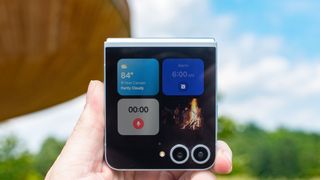
7. Samsung Galaxy Z Flip 6
Our expert review:
Specifications
Reasons to buy
Reasons to avoid
✅ You want a flip foldable that will last: With a durable design, powerful processor, and seven years of software updates ahead, the Z Flip 6 is the flip phone to keep.
✅ You want a phone that’s more professional than cool: The Z Flip 6 is understated compared to the Razr Plus 2024, but it blends in better with the iPhone and Pro set.
❌ You want to use the phone when it’s closed: The cover screen on the Galaxy Z Flip 6 is still an afterthought, while Motorola’s Razr gives you a whole new experience.
❌ You need great cameras on your phone: The cameras on the Galaxy Z Flip 6 are a letdown, with no zoom lens and mediocre image quality. If you care a lot, buy the S24 Ultra.
Taking the place of the model preceding it, the Samsung Galaxy Z Flip 6 is the best compact phone that you can buy in Australia, being the smallest phone on this list when folded in half and sporting a uniquely tall form factor when unfolded.
Similar to popular flip phones from the 2000s, the Samsung Galaxy Z Flip 6 folds vertically, making it quite a good pick if you’re craving a phone that’s just bursting with style points. The design has been refined this year with a gorgeous two-tone aesthetic on most colourways and the glass midsection where the phone is folded doesn’t have a particularly noticeable bump to it in-use.
Galaxy AI also saw some subtle improvements with the Z Flip 6, including an innovative new translation feature that utilises the cover display as a live translator for the person you’re conversing with.
However, that exterior cover display lacks quite a lot of functionality and is really only useful for some apps and for responding to calls and notifications. Battery life is also below average for phones of the Z Flip 6’s price point and IP48 protection really isn’t much to write home about when IP68 is so common for premium devices (though obviously we can point to the foldable form factor for this lower resistance rating).
That said, if a pocketable phone is top of your wishlist, this foldable gives you the best of both worlds.
Read our full Samsung Galaxy Z Flip 6 review
The best foldable phone
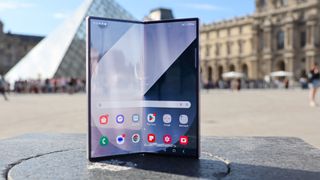
8. Samsung Galaxy Z Fold 6
Our expert review:
Specifications
Reasons to buy
Reasons to avoid
✅ You're ready to try a foldable phone: Even though the Google Pixel Fold has a better cover display, Samsung's Z Fold 6 is the more refined foldable experience, especially when you unfold it and look at the main screen, which cuts down the bezel and gives you a more expansive display.
✅ You want quality photography: Samsung didn't change the cameras on the Z Fold 6, but they're still a formidable collection of lenses, now backed by the powerful Qualcomm Snapdragon 8 Gen 2 chipset.
❌ You're on a budget: At AU$2,749, this is one of the most expensive Android phones on the market. At the very least, look for deals before you buy.
❌ You demand the best in camera optics: As above, the cameras here are great, but for the best in Samsung photography, look to the Samsung Galaxy S24 Ultra, which has higher megapixels.
The Samsung Galaxy Z Fold 6 doesn’t change much over its predecessor from the year before, but it does hit all the same notes perfectly, with a refreshed design and some more refined features.
The 7.6-inch, 1856 x 2160 resolution doesn’t stray far from last year’s model, though aesthetically the device is a lot more square, packed with a Snapdragon 8 Gen 3 chip and a 4,400mAh battery. The display is brighter, and Samsung’s packed the company’s ‘Galaxy AI’ kit right into the phone from the get-go.
All of this said, the Galaxy Z Fold 6 is one of the most expensive phones in Australia, and the largest storage capacity model is in fact the most pricey handset in the country.
Additionally, while it is a huge phone with a gorgeous screen, the Galaxy S24 Ultra has much more capable cameras that might impress you more if you want to take snaps. Despite being more expensive, being bigger, and having a pretty cool gimmick, the Galaxy Z Fold 6 isn’t entirely a better phone over the S24 Ultra.
Read our full Samsung Galaxy Z Fold 6 review
See the best Samsung Galaxy Z Fold 6 plans in Australia
FAQs
What is the best phone in Australia in 2024?
There’s no real ‘best’ phone, and there never will be – there will be, however, a phone that suits your needs quite well, whether you need powerful cameras, a huge storage capacity, a gorgeous display or a mix of these things.
If that mix sounds good, it might be worthwhile considering the iPhone 16 Pro, however, it’s worth keeping the pros and cons of this in mind, including a reasonably high entry price, plus a fairly standard screen and handset size.
Going bigger than this, you can consider the iPhone 16 Pro Max, or if you’re willing to go Android, you might want to consider the Samsung Galaxy S24 Ultra if you want the best of the best. Down from this, you might also want to consider the Samsung Galaxy A55 if you’re after a budget handset or the Samsung Galaxy Z Flip 6 if you want a compact device.
If your heart is set on a big screen, or if you want to take on a foldable, then you can’t go wrong with the Samsung Galaxy Z Fold 6 – though be aware that this is one of the most expensive smartphones in the country.
Which phone has the best camera?
Moving over to recommendations from our guide to the best camera phones, the best phone for taking photos is the Samsung Galaxy S24 Ultra. As we found in our Samsung Galaxy S24 Ultra review, the South Korean tech giant’s flagship phone of 2024 includes a brilliant sense of depth with exceptionally natural colour. Image quality saw an obvious improvement over the S23 Ultra, though Samsung did elect to drop zoom from 10x to 5x on its latest Ultra.
That said, the best phones from each smartphone maker usually include some incredible cameras, as great photo quality has, for the most part, become inseparable from flagship devices. The iPhone 16 Pro Max and the Google Pixel 9 Pro XL are both brilliant photo-taking phones obviously.
How much storage should my phone have?
A casual user would likely get by with either 128GB or 256GB of storage capacity on a phone in 2024, providing ample room for whatever apps, photos and videos the user wants to keep on-device – but power users who take lots of video and keep big video games on their phone might want to consider 512GB or 1TB storage potions.
Storage is something that users demand highly of when it comes to the best phones in Australia, whether it’s for keeping lots of photos on-device or for having lots of apps installed – but when more storage equals a higher cost, you should seriously consider your priorities. The flip side to this is that higher storage capacities – 256GB and higher – can also maintain battery health for longer.
Additionally, you should also consider some cloud storage solutions for if you want to keep your photos and videos saved but don’t want to keep them readily available on your device. Most cloud storage solutions include a free amount of storage before you need to pay, though for backups and for native app data, iPhone users will need to rely on iCloud (which offers 5GB free and paid storage options above that).
How to choose the best phone for you
Depending on the way you use your smartphone, there are likely to be one or more aspects of a device that are important to you.
If you want a hardy smartphone, you should check whether it has an IP rating – this will dictate how protected it is against dust and moisture. Also consider its material – ceramic is very fragile, as is glass, but plastic and metal can be more protective.
If you stream a lot, you might want a good-looking display. Bigger, up to 6.8 inches, might be useful for you, as will a resolution over 1080p. Refresh rates of 90Hz or 120Hz also ensure that motion looks smoother.
Battery life can be a pain for people, though capacity doesn't always dictate how long a mobile lasts. A phone needs to last at least a day to be useful for most people, though some go up to two days.
Charging speed is also important, and anything of 65W or up is good, though some phones now offer over 120W. The best phones power up in under an hour, and some even take less than 30 minutes.
Camera quality is hard to convey through a specs list, so you'll have to rely on our analysis and testing to see how good they are – but it's always useful to find a camera phone with multiple lenses and modes.
How we test
Every phone on this list was subjected to a full TechRadar review, and therefore our entire testing process. The core part of this process involves using the phone as our own for one week or more. We slot our SIM card in, use the device for social media, entertainment, photography and other normal tasks.
This is so we can emulate how you'll use the device if you buy it. It helps us understand all the quirks of a phone that you don't notice if you just leave the device in a lab and test it. Of course, we do some lab tests, too, for some direct comparison.
So, we'll game and we'll do benchmark tests to work out how powerful a phone is; we'll time a phone when it's charging but also just work out how powering fits into our morning routine; we'll test how long a phone takes to run down, but also just handle it day-to-day for a long period of time.
Our main areas of focus in our review are the phone's design, display, cameras, performance, software and battery life, though of course its price is also important for our final judgement.
You're at the end of the guide, but that doesn't mean we can't help you still - if you're stuck on which model is for you, we've got a tool that can compare all the phones together and you can decide which one suits you best based on the cost.
If you want to get all the info, then use the tool below or check out our full mobile phone plans page.
Get the best Black Friday deals direct to your inbox, plus news, reviews, and more.
Sign up to be the first to know about unmissable Black Friday deals on top tech, plus get all your favorite TechRadar content.

Zac has been in the tech writing game for six years, having previously written for Gizmodo Australia, Canstar Blue, and The Daily Mail Australia (with articles on Nine, Junkee, Kotaku Australia and Lifehacker Australia). He’s a huge nerd with a deep passion for technology. While his main focus at TechRadar Australia is phones, monitors and peripherals, he also has a deep interest in the growing Australian EV landscape. Outside of Techradar, Zac’s a Headspace (a youth mental health organization) volunteer and an avid gamer.
- Max LangridgeStaff Writer
Most Popular




